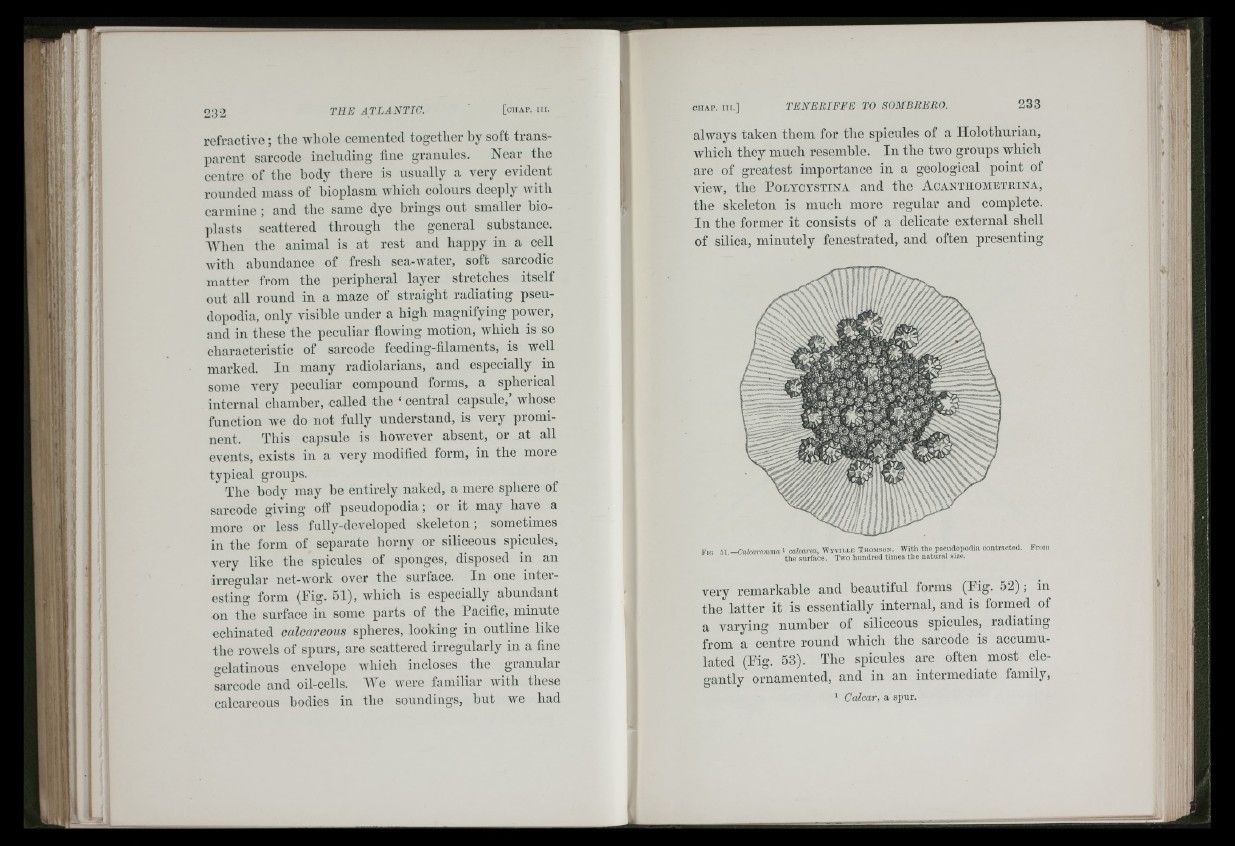
I
h i
<-•M
f.
i t f
; i,:. L !
I k I
i j ,
iDw
hi
O') 9
refractive; the whole cemented together by soft transparent
sarcode including line granules. Near the
centre of the body there is usually a very evident
rounded mass of bioplasm which colours deeply with
carmine ; and the same dye brings out smaller bioplasts
scattered through the general substance.
When the animal is at rest and happy in a cell
Avith ahundance of fresh sea-Avater, soft sarcodic
matter from the peripheral layer stretches itself
out all round in a maze of straight radiating pseudopodia,
only visible under a high magnifying power,
and in these the peculiar floAving motion, Avliich is so
characteristic of sarcode feeding-filaments, is well
marked. In many radiolariaus, and especially in
some very peculiar compound forms, a spherical
internal chamber, called the ‘ central capsule, whose
function Ave do not fully understand, is very prominent.
This capsule is hoAvever absent, or at all
CA'ents, exists in a very modified form, in the more
typical groups.
The body may be entirely naked, a mere sphere of
sarcode giving off pseudopodia; or it may have a
more or less fully-developed skeleton; sometimes
in the form of separate horny or siliceous spicules,
A-ery like the spicules of sponges, disposed in an
irregular net-Avork over the surface. In one interesting
form (Fig. 51), which is especially abundant
on the surface in some parts of the Pacific, minute
echinated calcareous spheres, looking in outline like
the rowels of spurs, are scattered irregularly in a fine
gelatinous envelope Avliicli incloses the granular
sarcode and oil-cells. We Avere familiar Avith these
calcareous bodies in the soundings, but we had
always taken them for tlie spicules of a Ilolothurian,
which they much resemble. In the tAVO groups which
are of greatest importance in a geological point of
vieAV, the P o ly cy stin a and the Acantiiometiiina,
the skeleton is much more regular and complete.
In the former it consists of a delicate external shell
of silica, minutely fenestrated, and often presenting
Fio 5 1 -C a icn rom m a l c a te re a , W y v ille Thomson. With the pseudopodia oontmotea. Froin
the surface. Two hundred times th e n atural size.
very remarkable and beautiful forms (Pig- 52), in
the latter it is essentially internal, and is formed of
a varying number of siliceous spicules, radiating
from a centre round which the sarcode is accumulated
(Pig. 53). The spicules are often most elegantly
ornamented, and in an intermediate family,
' Calcar, a spur.
I
Ip#:.:
" 1' i: I
■h' ...5;'.* "
ff teW
ff!
.'.1i .. I
I I
I iijl
ti ; ! '